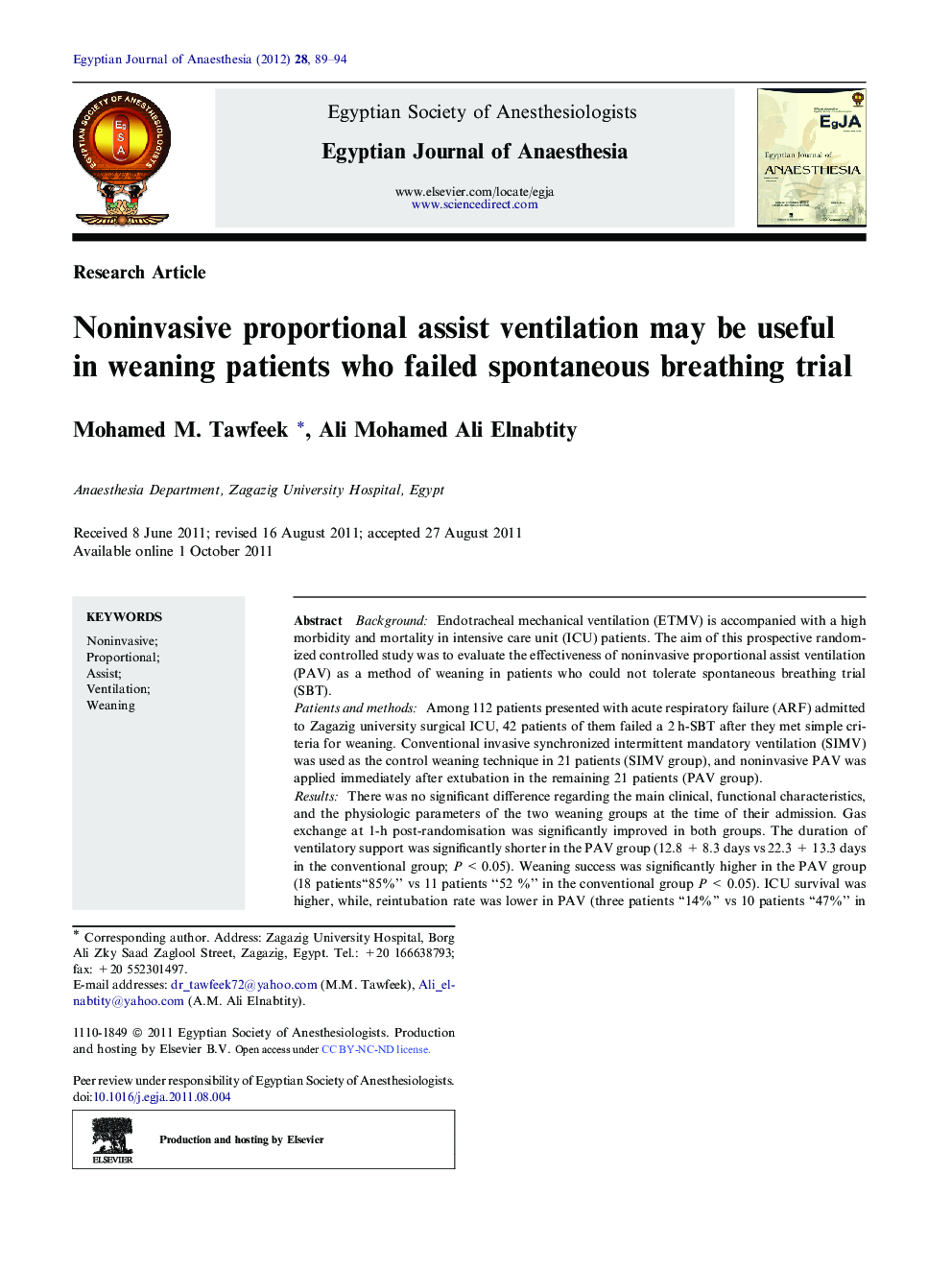| Article ID | Journal | Published Year | Pages | File Type |
|---|---|---|---|---|
| 2756492 | Egyptian Journal of Anaesthesia | 2012 | 6 Pages |
BackgroundEndotracheal mechanical ventilation (ETMV) is accompanied with a high morbidity and mortality in intensive care unit (ICU) patients. The aim of this prospective randomized controlled study was to evaluate the effectiveness of noninvasive proportional assist ventilation (PAV) as a method of weaning in patients who could not tolerate spontaneous breathing trial (SBT).Patients and methodsAmong 112 patients presented with acute respiratory failure (ARF) admitted to Zagazig university surgical ICU, 42 patients of them failed a 2 h-SBT after they met simple criteria for weaning. Conventional invasive synchronized intermittent mandatory ventilation (SIMV) was used as the control weaning technique in 21 patients (SIMV group), and noninvasive PAV was applied immediately after extubation in the remaining 21 patients (PAV group).ResultsThere was no significant difference regarding the main clinical, functional characteristics, and the physiologic parameters of the two weaning groups at the time of their admission. Gas exchange at 1-h post-randomisation was significantly improved in both groups. The duration of ventilatory support was significantly shorter in the PAV group (12.8 + 8.3 days vs 22.3 + 13.3 days in the conventional group; P < 0.05). Weaning success was significantly higher in the PAV group (18 patients“85%” vs 11 patients “52 %” in the conventional group P < 0.05). ICU survival was higher, while, reintubation rate was lower in PAV (three patients “14%” vs 10 patients “47%” in the conventional group; P < 0.05). The rate of tracheostomy was significantly lower in the PAV group (one patient “4%” vs seven patients “33%” in the conventional group; P < 0.05). The incidence of VAP was higher in the conventional group (eight patients “38%” vs one patient “4%”in the PAV group; P < 0.05).ConclusionNoninvasive PAV could be considered as an effective and safe method of weaning in patients who cannot tolerate 2 h-SBT.
